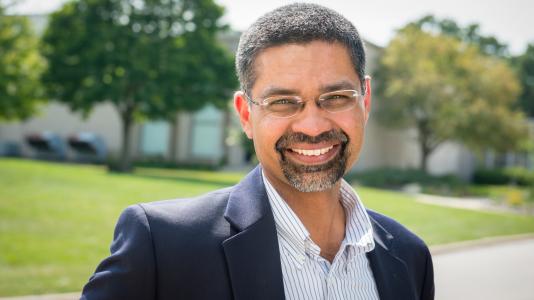
Suresh Sunderrajan joined Argonne as the director of the lab’s Technology Development and Commercialization division in April 2015, bringing with him a wealth of experience in all aspects of technology commercialization and business growth at large corporations and start-ups.
Q: What was your path prior to joining Argonne?
A: My path to Argonne was, to put it mildly, non-linear. I came to the United States in 1991 to do my Ph.D. in chemical engineering. While working at the Eastman Kodak Company, one of my early projects made it through the stage-gate development process, giving me an opportunity to lead the commercialization effort. This was my first exposure to the multidisciplinary, multifunctional challenge that is product commercialization and I found that this was just incredibly fun.
While at Kodak, I was lucky to be sponsored for a business degree at MIT (Sloan School). I was also offered opportunities working in the Kodak New Business Ventures organization and in the Kodak Venture Capital group. As a corporate venture capitalist, while I enjoyed my job, I couldn’t help but feel that the start-up teams that I met with regularly were accomplishing great things, while I was little more than an informed bystander. I took the plunge, and over the next 8 years co-founded/ran 4 different start-ups.
While I didn’t set out to either work at a national lab or to focus on technology commercialization, my experiences have actually prepared me very well for my current role.
Q: What is the role of Argonne’s Technology Development and Commercialization (TDC) division?
A: Whereas the mission of the Lab is to address vital national challenges in clean energy, environment, technology and national security, TDC exists to assist the researchers in executing their work and in delivering the solutions they develop to real-world use. We work with large companies, small to medium enterprises, and start-ups, as well as with other organizational entities in this ecosystem, to facilitate the development, transfer, and use of Argonne technology for public benefit.
Interested in tech transfer at Argonne? Learn more at the Technology Development & Commercialization site.
Q: Given that you are new to Argonne, what do you view as a ‘hidden’ strength of the lab?
A: The ability to be a one-stop-shop solutions provider for the organizations we work with. For example, if you are a company that has a tough R&D challenge that requires work in materials science, computer modeling, and nanoscience, rather than work with three different partners on the individual pieces, you can call on Argonne to assemble a cross-functional team of people here at the lab to tackle that problem in a coordinated and efficient way, using tools and facilities that are cutting-edge and in some cases truly one-of-a-kind. A good analogy would be if you want to build a house, rather than hiring a plumber, a carpenter, a concrete crew, and so on, all separately, it’s more efficient and easier for you to hire a general contractor to assemble the team and ensure everyone is working together. Argonne acts as that general contractor for our partners, making their lives easier and delivering superior results.
To this end, there are two new centers Argonne has just opened—one focused on energy storage and the other on nanotechnology—that take this idea and build upon it.
Q: What is the rationale behind national laboratories getting involved in this type of activity? Can’t the private sector handle this?
A: Large companies are investing less and less in basic scientific research, and basic scientific research is the foundation of commercial products and processes that improve our lives, make us healthier, help us take better care of our environment, etc. Given the highly competitive nature of private industry, companies feel compelled to ensure that they perform well in the near term, because if they don’t, there might not be a long term. The national labs are filling a critical hole by taking a longer-term view and bridging the gap between basic research and real-world products and solutions.
Q: Seeing as you are new to the Chicago area, we have to ask: Chicago-style hot dog or deep-dish pizza?
A: I haven’t been in town long enough, so I’ll need some guidance on this, but my guess would be both?
(Ed. note: That was actually a trick question, and you nailed it: the correct answer is in fact “both.” Now, as far as which pizzeria or hot dog stand are the best, you’ll have to ask your new neighbors, and you’ll likely get five different answers in each category.)